In Tuscany, almost on the border with Lazio, there is a promontory famous throughout the mare nostrum: Mount Argentario. A crystal-clear sea, between theislands of Giglio and Giannutri, in the middle of the “Cetacean Sanctuary” with a marine area classified as “Protected Area of Mediterranean Interest,” surrounds Monte Argentario, which was once an island and today is one of the most internationally known places for yachting and sailing and for the unique morphological and environmental features concentrated here. The entire promontory (which has a maximum height of 635 meters at Punta Telegrafo) makes a commune in itself, with the hamlets of Porto Santo Stefano and Porto Ercole on the two sides of the mountain, and boasts a long military history linked to its strategic position on the sea in the middle of the Tyrrhenian Sea (evidenced by the many fortresses and fortifications with which it is encircled) and for its “beautiful to live in” environment, so much so that in Roman times several patrician families chose it to build holiday residences there (“Case d’ozio”). The landscape (with a rugged coastline full of very characteristic coves) and the mild climate make it suitable for a vacation many months a year where nature, sports activities, food, history and traditional events make it rich in different experiences to live, not only related to the summer: the steep Monte Argentario, rich in man-made terraces over the centuries, offers paths in the lush Mediterranean scrub for trekking and biking lovers for excursions among vineyards and palm trees. Not to mention marine excursions. Let’s see an itinerary of 10 points of interest.
The Argentario is connected to the coast by two strips of land to the north and south: the sandy tombolos of Feniglia and Giannella (6 kilometers long) enclose a lagoon with a unique ecosystem, one of the most unspoiled naturalistic areas in Italy that amazes for the gifts it can give. For example, the pink that invades the lagoon from the flamingos that station or stop there on their migratory journeys. There are over 1,500 hectares of marshy land in the middle of which is an isthmus on which stands the town of Orbetello connected to the Argentario by a bridge (the Leopoldina Dam). In the northern part is a WWF Nature Reserve where many species of birds nest or find their space for stops on their journeys: in addition to flamingos, one can admire the stilt-bird, great egret, osprey, and cormorant. Equally rich are the waters of the lagoon: bass, bream, mullet, eel. Highly developed is the production of the prized botargo. Nature is also unleashed in the flora with sclerophyllous vegetation with Phoenician and coccone juniper, phillyrea, alaterno, smilace, lentisk and myrtle, holm oak, cork oak with ash and downy oak. To the south, on the other hand, is the Feniglia Nature Reserve, where fallow deer, wild boar and other ungulates, foxes, badgers and other rodents, turtle doves, woodpeckers, hoopoes and nocturnal birds of prey live freely. At the time of Sienese rule, nine mills were built in the Lagoon, whose operation was linked to the movement of water by the tides. Today only one remains, iconic, suspended between the waters, which can be admired with a short walk from the center of Orbetello.
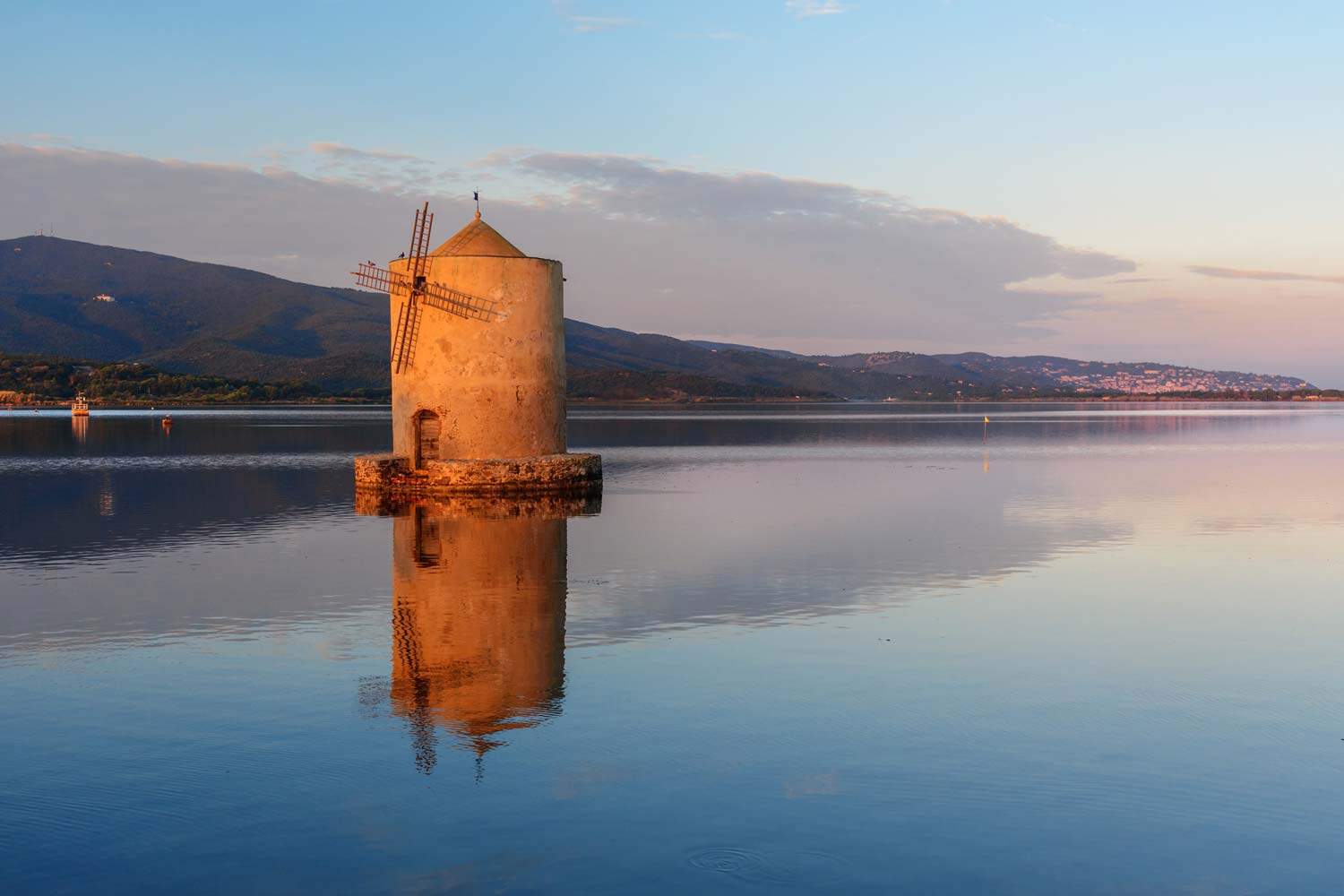
The Archaeological Museum of Orbetello since 2004 has been located in a former powder magazine from 1692 along the Levante walls (the place where Garibaldi also stopped to stock up on ammunition and weapons for the Expedition of the Thousand after the attack on Talamone) and preserves in its interior jewels, buccheri and stone tools, covering a chronological span from theVillanovan to Roman age, with artifacts from the Etruscan necropolises in the Orbetello and Talamone area (votive shrines, weapons, agricultural tools and grave goods) and finds from the Roman structures discovered in the area. The collection began in the late 19th century and has changed several locations until the present one, and since 2007 it has been part of the museum network of the Maremma Museums. Noteworthy are the finds from the necropolis of Orbetello that belonged to the rich Etruscan aristocracy of the 4th century B.C. consisting of ornaments of various types, mostly in gold, decorated with embossing technique, but also in bronze such as mirrors. From the Talamone necropolis various decorative objects from the temple doors of the Hellenistic period, in bronze such as spearheads and knives, agricultural implements. Also in the museum is the “pediment of the temple of Talamone”: an Etruscan work from the Hellenic age.
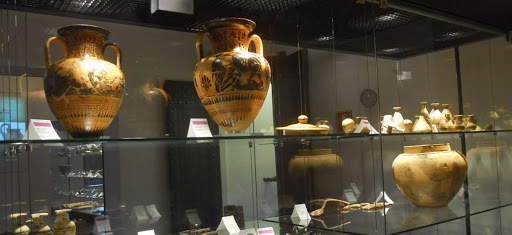
Orbetello, which has very ancient origins dating back to the Neolithic period, is built on the isthmus within the lagoon of the same name, and that alone would be enough to visit it. A town of Etruscan origin, it was with the Spanish domination that it experienced its greatest moments of development with the related fortifications and constructions. A large wall still surrounds the town: these are Etruscan walls later reinforced by the Spanish, and the most substantial part of the fortifications rises on the side facing the mainland and is equipped with small square towers. Over the centuries Orbetello, like Argentario, played a garrison role against potential invaders, and this determined its urban development. Inside, the cathedral of Santa Maria Assunta is certainly worth a visit, with its large rose window on the façade reminiscent of that of Orvieto Cathedral. Inside it is richly decorated with works of art, stucco and furnishings from the 17th century with the San Biagio chapel in Baroque style.
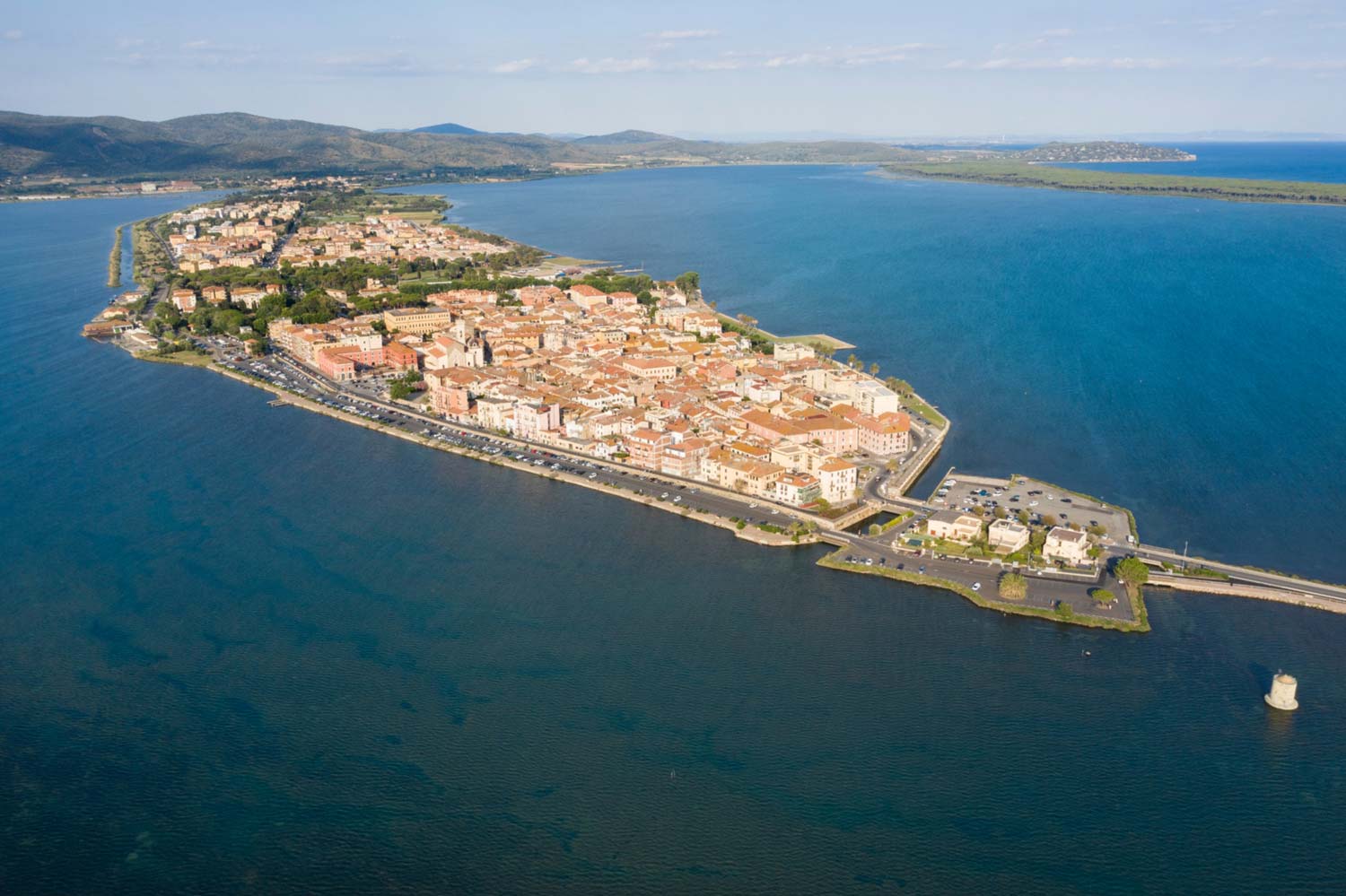
Positioned to the southeast of Argentario is Porto Ercole, which boasts a beautiful bay topped by the Spanish fortresses built at the time of the Stato dei Presidi: Forte Filippo, the Rocca and Forte Stella, which are still in excellent condition and can be visited as optimal vantage points. It was under Spanish rule that Porto Ercole experienced its greatest splendor and became a port of European importance. Throughout the promontory there are ten watchtowers and three fortresses. It was targeted several times by pirates including, in 1544 also by Barbarossa, who plundered and looted it. The ports and landings of Portus Herculis, Incitaria and Domitiana on Argentario are all mentioned in theItinerarium Maritimum, among the ports and landings of the sea route from Rome to Provence. Of note, in the Salone dei Cinquecento in Florence, Vasari depicted the naval battle that took place here between the Spanish and the French when Porto Ercole was under Sienese rule, allied with the French, and the Spanish were allied with Florence. Its nature is that of a seaside village, and its oldest part under the Fortress has kept its past architecture intact and is passable only on foot. Among the narrow streets and colorful palaces one arrives at the church of Sant’Erasmo where the tombs of Spanish rulers are located. Going up through the old town, one can enjoy a splendid view from the panoramic terrace and visit the 16th-century Palazzo dei Governanti. In Porto Ercole he found his death, a fugitive, Caravaggio in 1610, and to commemorate him there is an inscription on the gateway to the village, which is topped by the Clock Tower. Porto Ercole was ranked among the most beautiful villages in Italy in 2004.
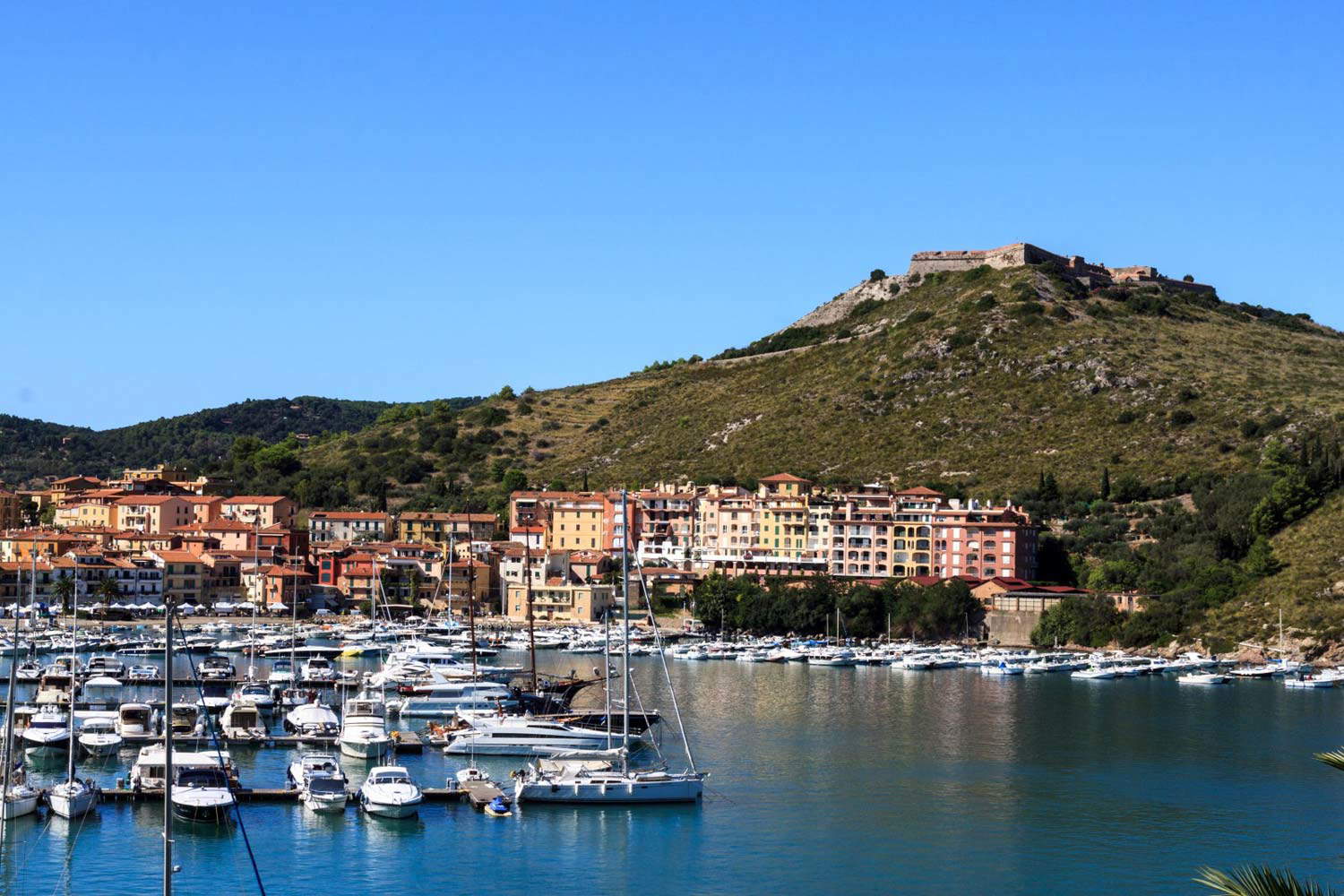
Porto Santo Stefano, dominated from above by the 17th-century Spanish Fortress, is the administrative center of Argentario and ferries to the islands of the Tuscan Archipelago stop here. It is a very chic seaside resort, the waterfront was even designed by Giorgetto Giugiaro, and the highly renowned marina is always full of yachts. There is also a Golf Club at Argentario, which consists of a park of no less than 77 hectares with an 18-hole course, set in a natural amphitheater composed of olive trees and Mediterranean scrub, and which offers a very fine panorama. Here, as at Porto Ercole, services for pleasure boating have been developed, making it one of the most visited landings in the Tyrrhenian Sea: Argentario is one of the world capitals of yachting with more than 2,000 berths, a mooring point for ships up to 80 meters in length (unique on the entire Tyrrhenian coast) and the two roadsteads (at Porto Santo Stefano and Porto Ercole) that can guarantee safe stopping in all weather conditions. Every year since 1937, re-enacting a pirate attack, the Palio Marinaro dell’Argentario is held at Ferragosto with a race between the four districts.

Built in the 17th century, it towers over the village: it has long since ceased its military functions and is now a place of art and culture, hosting two permanent exhibitions illustrating local history, one on archaeological finds at sea and one on the mastery of woodworking. The fortress has six-meter-thick walls and a square basement, and is structured on two levels that keep intact the embrasures from which the cannons were fired. Today the interior is home to the Shipwrights’ Museum dedicated to the artisans capable of “making wood sail,” with a display of techniques for developing ship carpentry. There is also as permanent exhibition “Submerged Memories,” which collects archaeological artifacts found on the seabed in the archipelago, where the oldest ones are from the Roman period. On the second floor is the section dedicated to the discovery of the archaic wreck (6th century B.C.) of Campese (Giglio Island).
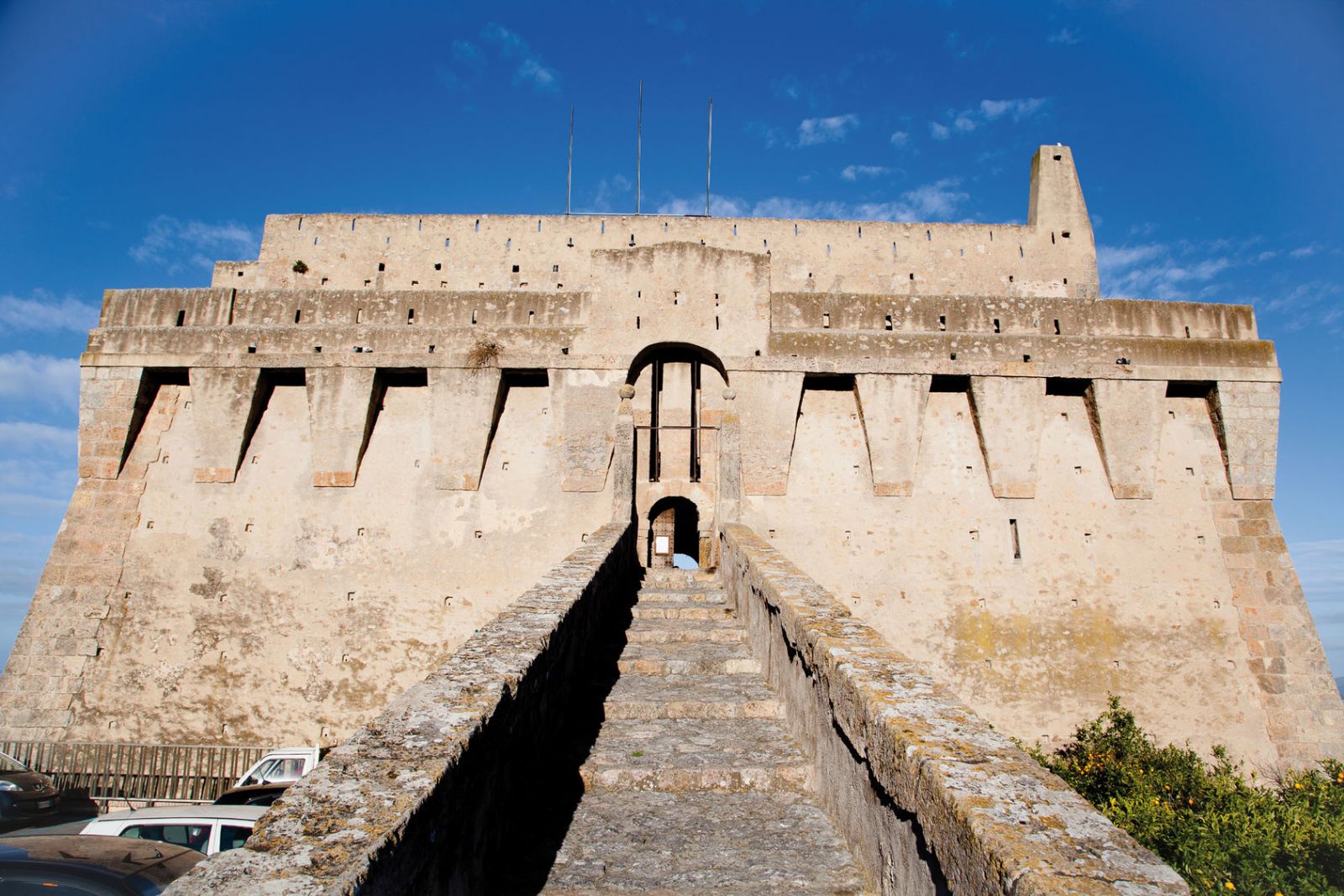
Fort Stella is an imposing fortification with four-pronged bastions with a second six-pronged fortification above it that overhangs the sea above Porto Ercole. Built between the mid-sixteenth century and the first half of the seventeenth century by the Spanish (who actually relied on Cosimo I dei Medici to build it), it is such a precise and well-preserved construction that it amazes today’s visitor. It was a watchtower that communicated with the other towers of the Argentario with light signals and thus allowed the entire defense system to be alerted against attacks in real time. It is now a venue for exhibitions, often of contemporary art.
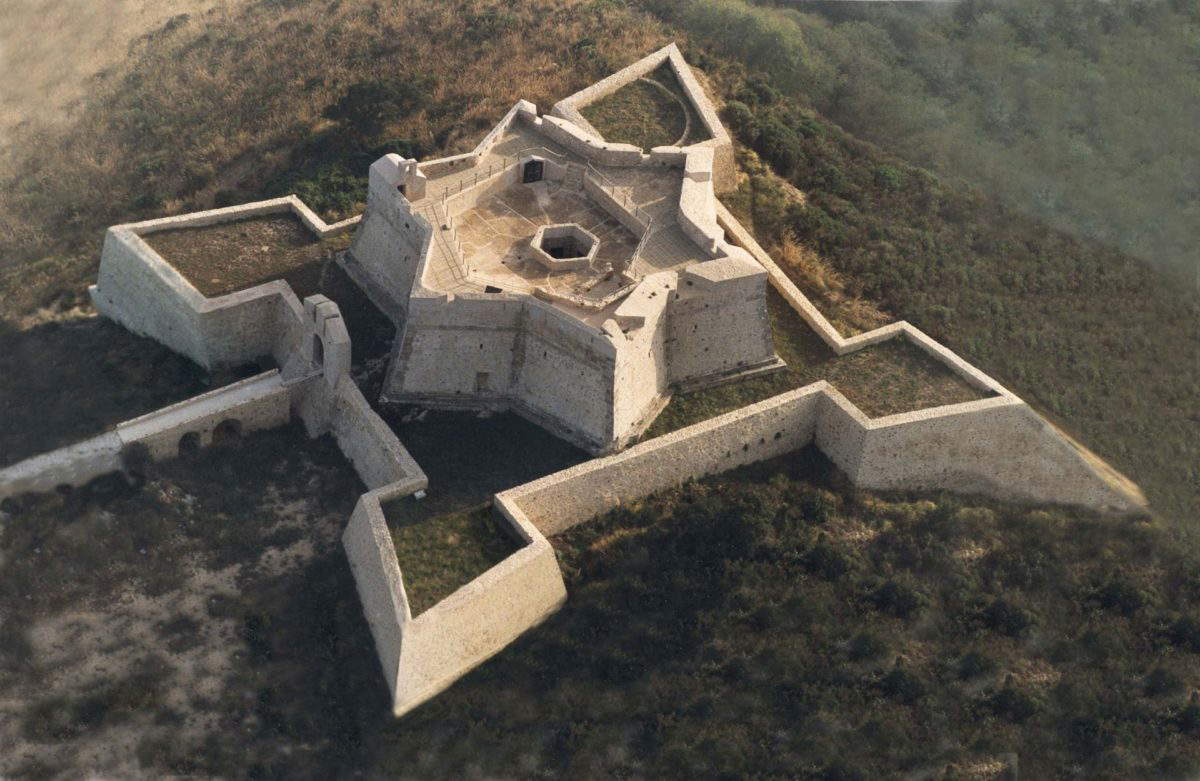
TheSilver Coast Mediterranean Aquarium, opened in 2001, was created with the intention of reproducing as faithfully as possible the most indicative ecosystems of the Argentario coastline. Conceived, designed and managed by the Mare Ambiente Academy Association with the intention of “proposing,” they explain on the site, “a faithful reconstruction of the characteristic environments of the seabed that lap the shores of the Promontory of Monte Argentario, so that visitors can experience the beautiful sensations that every diver experiences when diving in Mare Nostrum. With its 17 tanks, 7 of which are panoramic with only seawater (about 50 thousand liters in all), it accommodates hundreds of animal and plant species, such as: Groupers, Moray eels, Seahorses, Octopuses, Dogfish, Catfish, Lobsters, Anthias, Tanute, Amberjack, Spondili, Gorgonians, Posidonia and many others.” It is a museum with educational tours, and there is also a permanent shell exhibition and underwater photography exhibition inside.
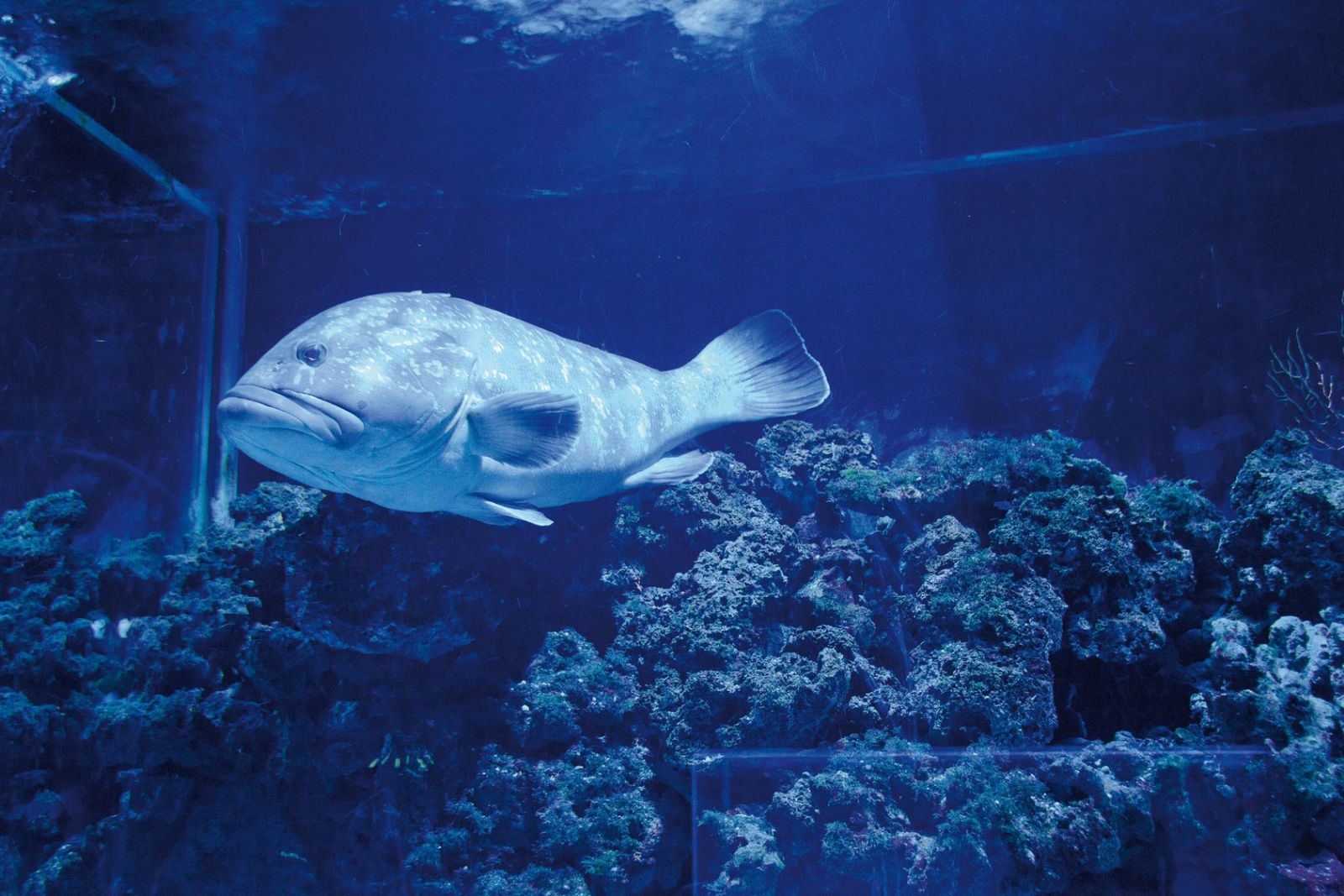
Not far from Monte Argentario, in the municipality of Capalbio on the border with Lazio, there is a contemporary art park created by French-American artist Niki de Saint-Phalle that transports visitors to an enchanted world: the Tarot Garden. Not a playground, although to a child’s eyes it would seem the same, but a place where whimsy and inventiveness have taken shape over 17 long years of work and fun among sculptures, colors, mirrors, ceramics, glass and concrete. There are 22 sculptures 12 to 15 meters high representing the Major Arcana of the Tarot, composed of iron and concrete then covered with mirror mosaics, Murano glass and ceramics. The idea was born on inspiration to a visit to Gaudí’s Guell Park in Barcelona. “I knew,” Niki wrote, “that one day I had to build my own garden of joy. A little corner of paradise. A meeting place between man and nature,” and so she did: in 1998 the Tarot Garden opened its gates to take people on an “esoteric walk between nature and culture.” The place is truly incredible and worth the cost of the ticket if only to see what Niki de Saint-Phalle’s passion has produced, which over the years has involved other artists and many local people who still work there today.
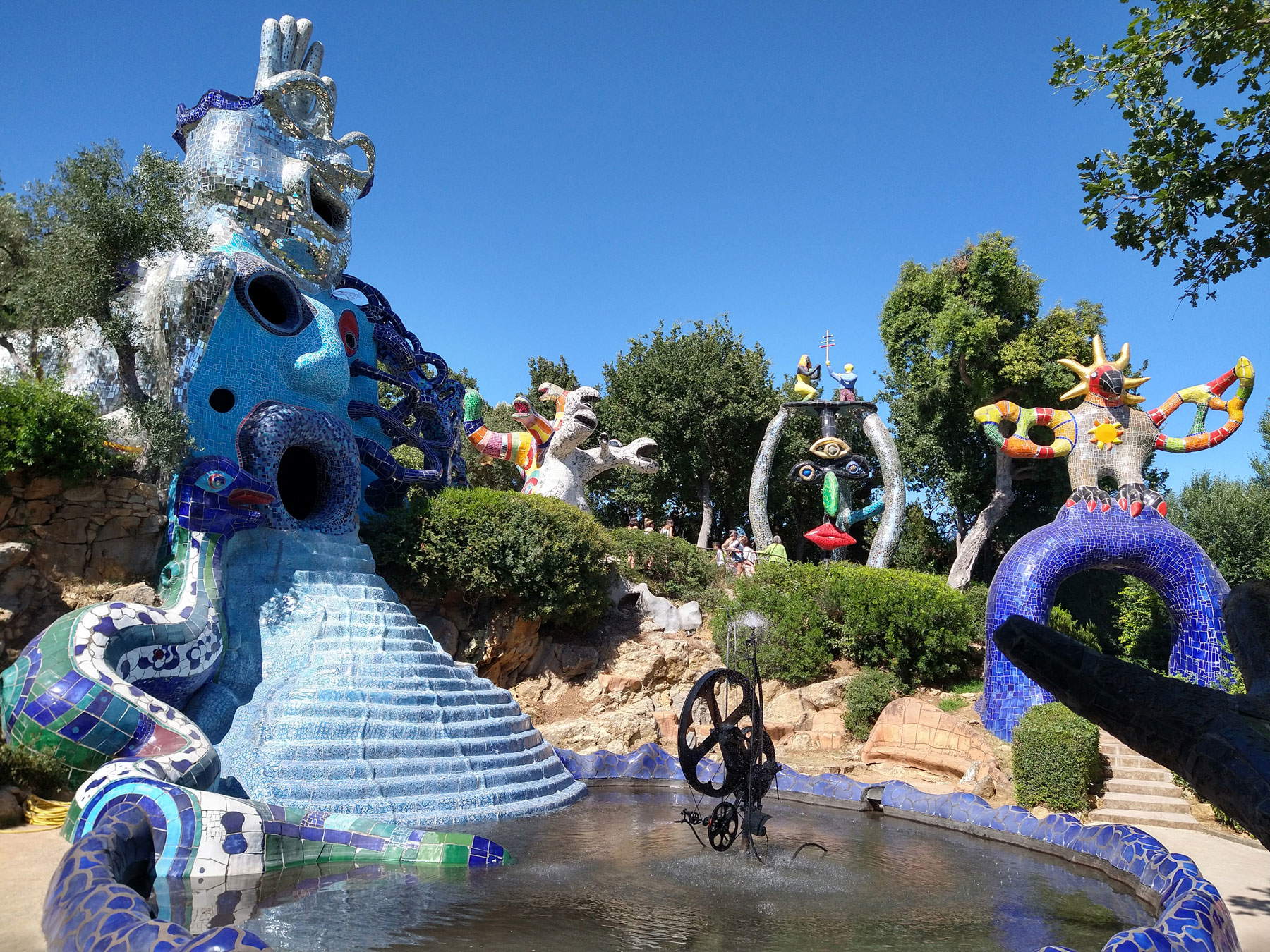
Cosa was a Roman colony founded in 273 B.C. that we can place today near Ansedonia, in the municipality of Orbetello, and its importance is evidenced by the National Archaeological Museum, which collects its artifacts. The extent can be calculated from the remains of the large walls that enclosed the city: a perimeter of about a kilometer and a half, three gates and many towers. Added to this was a second wall that bounded the space of the acropolis, with an opening to the harbor. In 1981 the American Academy in Rome asked for cooperation from the Italian state to open a museum dedicated to Cosa, and so this National Museum was opened, which atfirst had only one exhibition hall. On display here were artifacts mainly from the Arce, the Forum, and private dwellings and related clay decorations from temples on the Arce, as well as ceramics, glass, and metal and ivory objects. In 1997 the expansion led to two more exhibition rooms: one dedicated to the harbor area, with artifacts found in the necropolis around the city, while the second room collects the history of Cosa up to the 15th century. The functions that can be deduced for the so fortified colony (with 18 towers and three gates) were always that of garrison: the Romans from here had strategic point of control of the sea against Carthaginian attacks and no less that of control of the territories just conquered to the Etruscans (Volsinii and Vulci). The museum is a promoter of many initiatives aimed at enhancing and discovering one of the most beautiful and also least known archaeological areas of the Maremma and the entire Mediterranean.

 |
| Monte Argentario, what to see. Itinerary in 10 stages |
Warning: the translation into English of the original Italian article was created using automatic tools. We undertake to review all articles, but we do not guarantee the total absence of inaccuracies in the translation due to the program. You can find the original by clicking on the ITA button. If you find any mistake,please contact us.